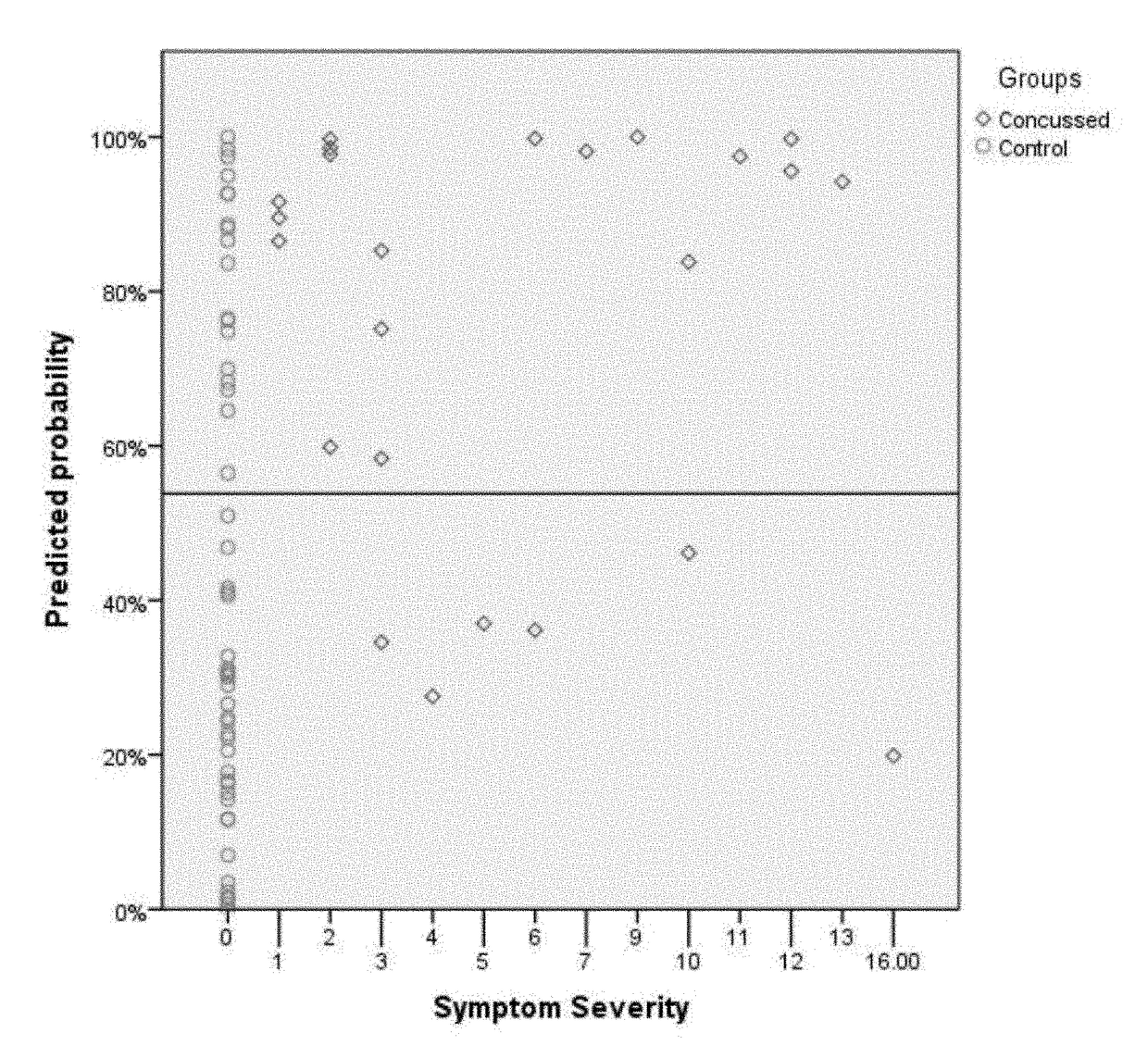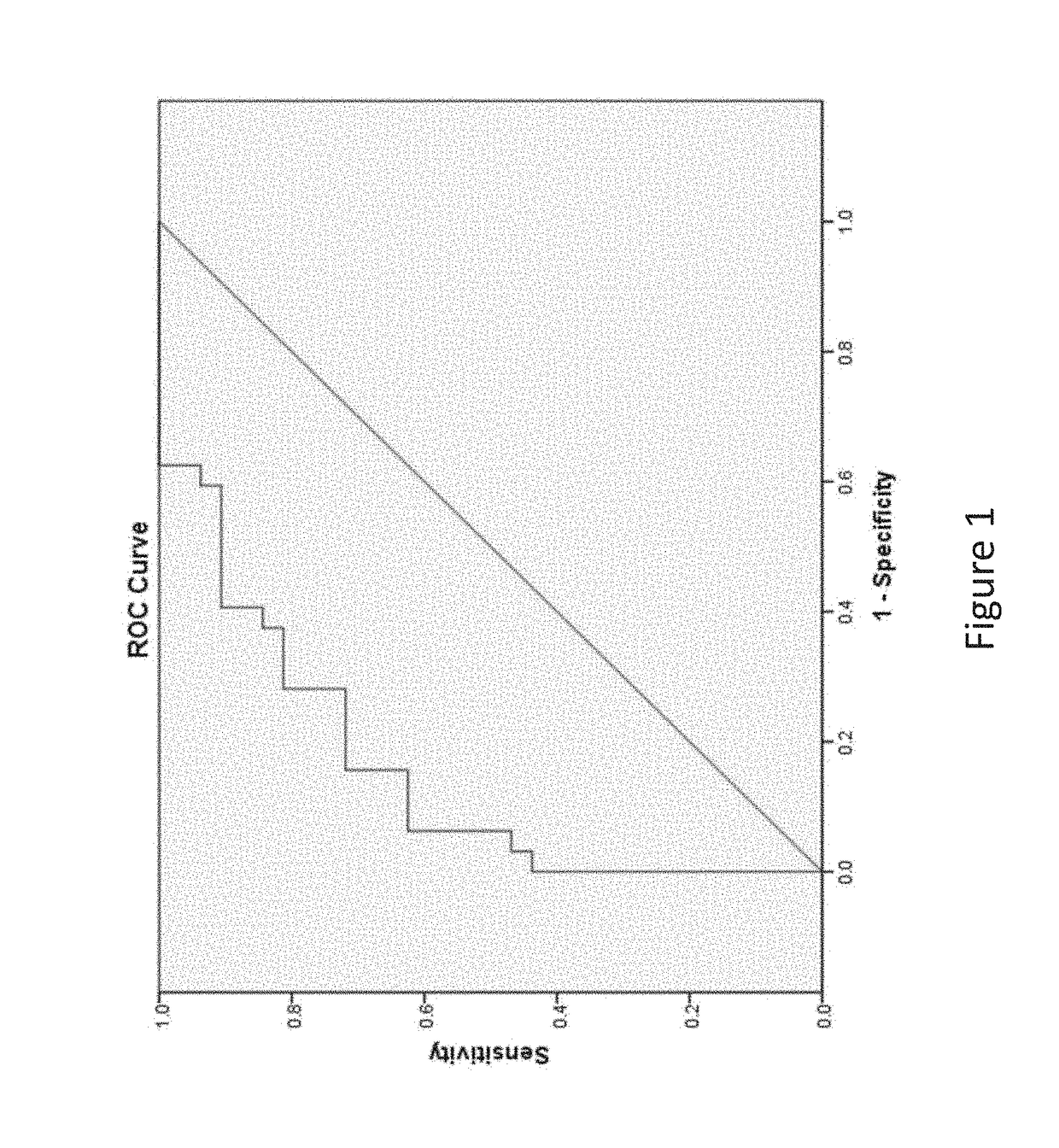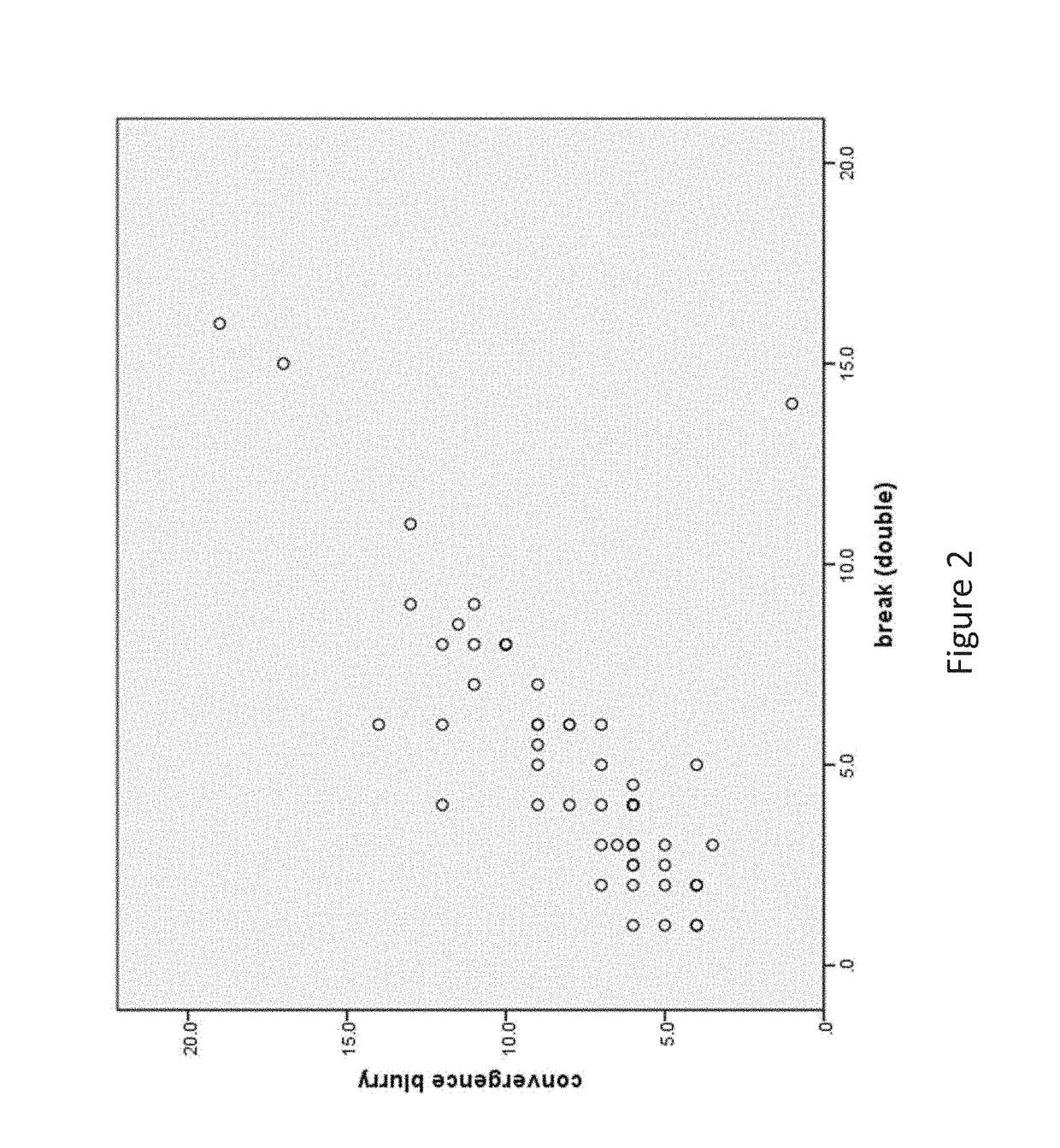Method for predicting convergence disorders caused by concussion or other neuropathology
a convergence disorder and neuropathology technology, applied in the field of medical diagnostic methods, can solve the problems of heterogeneous nature difficult diagnosis and treatment of traumatic brain injuries, and very serious and significant health problems, and achieve the effects of constant speed, reducing or substantially avoiding boundary effects, and optimizing the assessment capability of the method
- Summary
- Abstract
- Description
- Claims
- Application Information
AI Technical Summary
Benefits of technology
Problems solved by technology
Method used
Image
Examples
example
Abstract
[0130]INTRODUCTION: Objective diagnosis of concussion remains a challenge. Eye movements tracked at a very high frequency (˜500 Hz) can detect abnormalities that last only a fraction of second. We mathematically converted abnormalities in eye movements related to concussion into a model that predicts the probability of being concussed in a pediatric patient population.
[0131]METHODS: This prospective case-control study recruited concussed and healthy control children from a concussion referral center. Eye movements were recorded while children watched a 220 second video clip as it rotated clockwise around the periphery of a 17″-viewing monitor. The pupils' raw coordinates were processed to obtain metrics that included measures from each eye separately and from both eyes together. Concussed patients were also evaluated clinically by performing convergence tests.
[0132]RESULTS: There were 32 age and gender matched subjects in each group (ages 4-21; mean 13; p-value for age-match...
PUM
 Login to View More
Login to View More Abstract
Description
Claims
Application Information
 Login to View More
Login to View More - R&D
- Intellectual Property
- Life Sciences
- Materials
- Tech Scout
- Unparalleled Data Quality
- Higher Quality Content
- 60% Fewer Hallucinations
Browse by: Latest US Patents, China's latest patents, Technical Efficacy Thesaurus, Application Domain, Technology Topic, Popular Technical Reports.
© 2025 PatSnap. All rights reserved.Legal|Privacy policy|Modern Slavery Act Transparency Statement|Sitemap|About US| Contact US: help@patsnap.com



